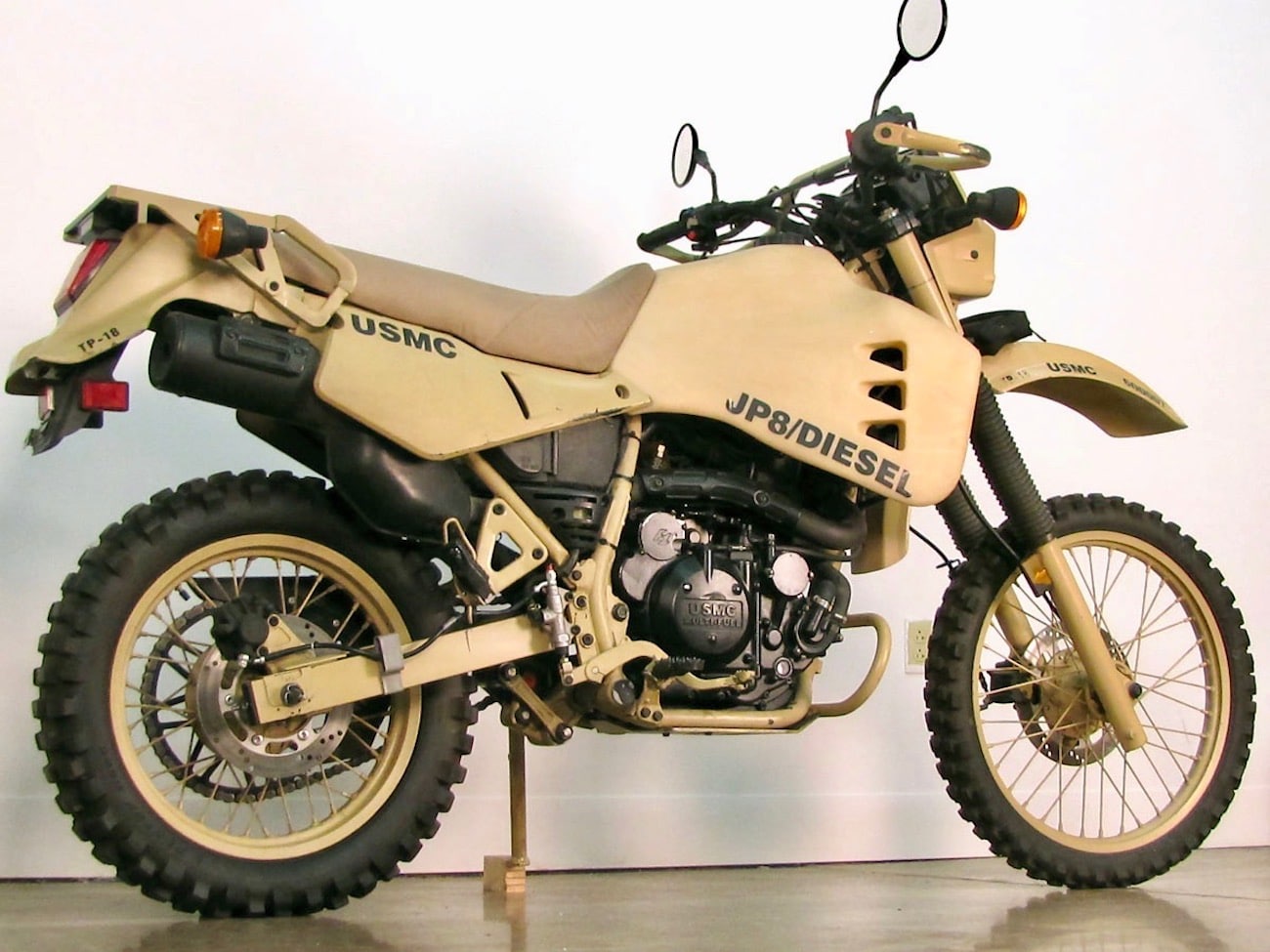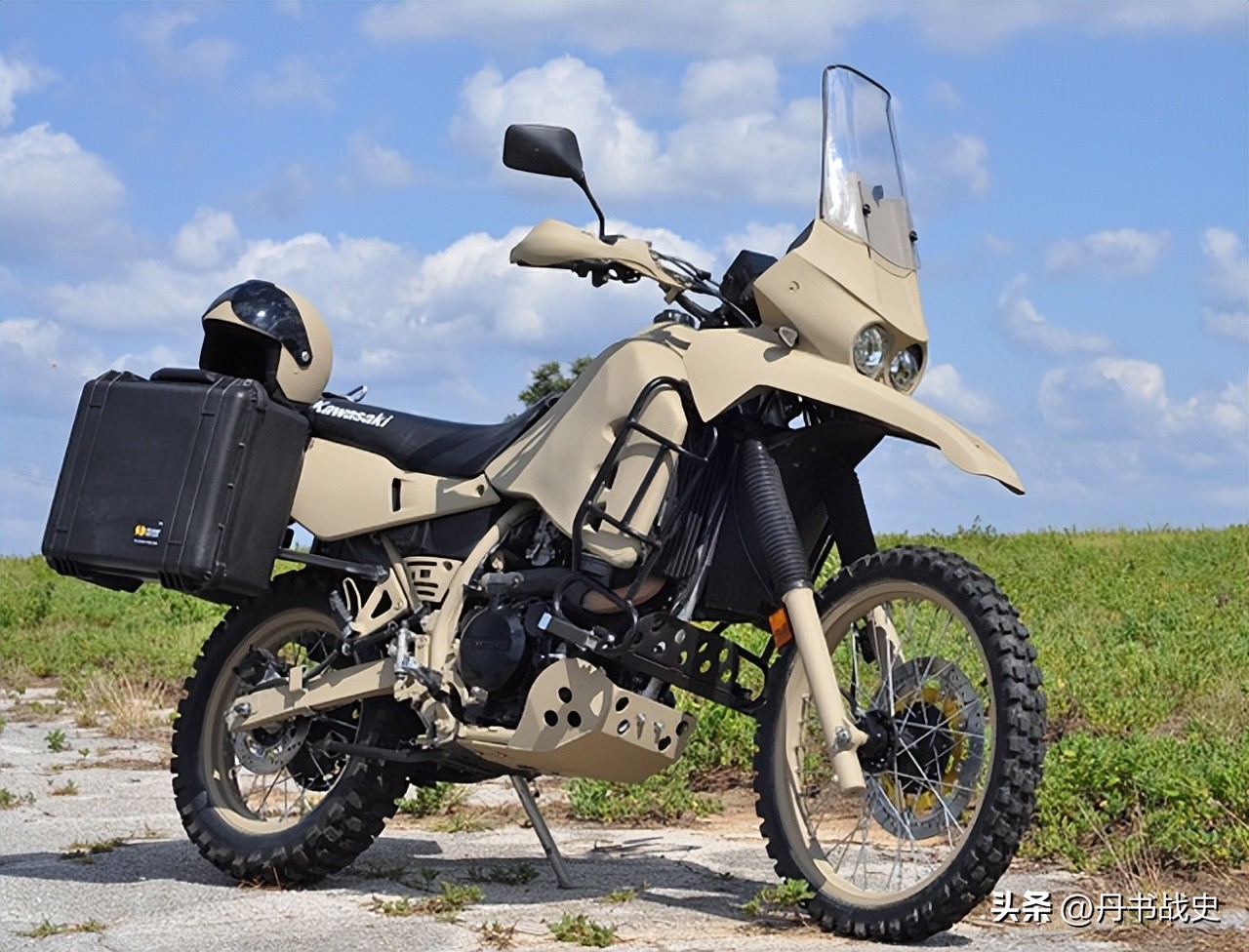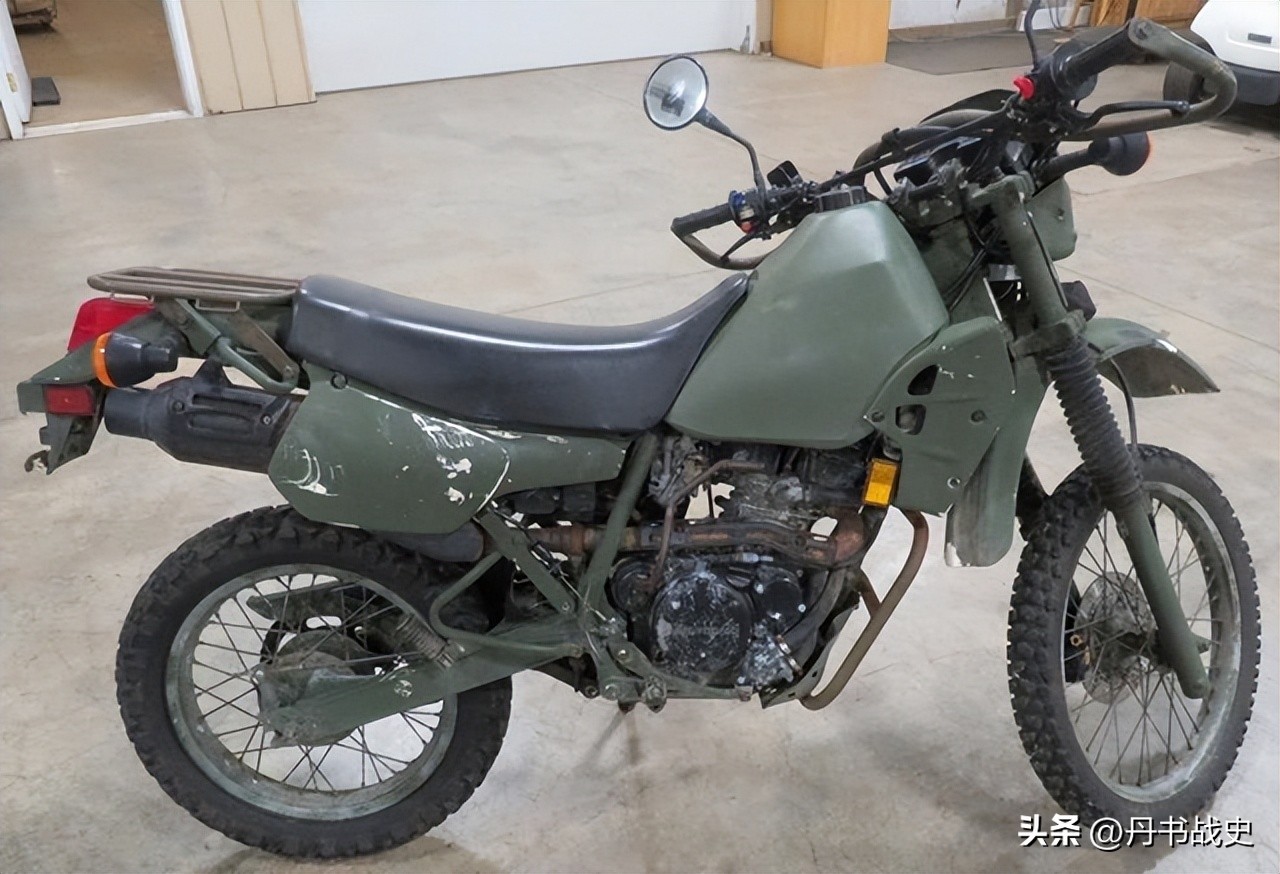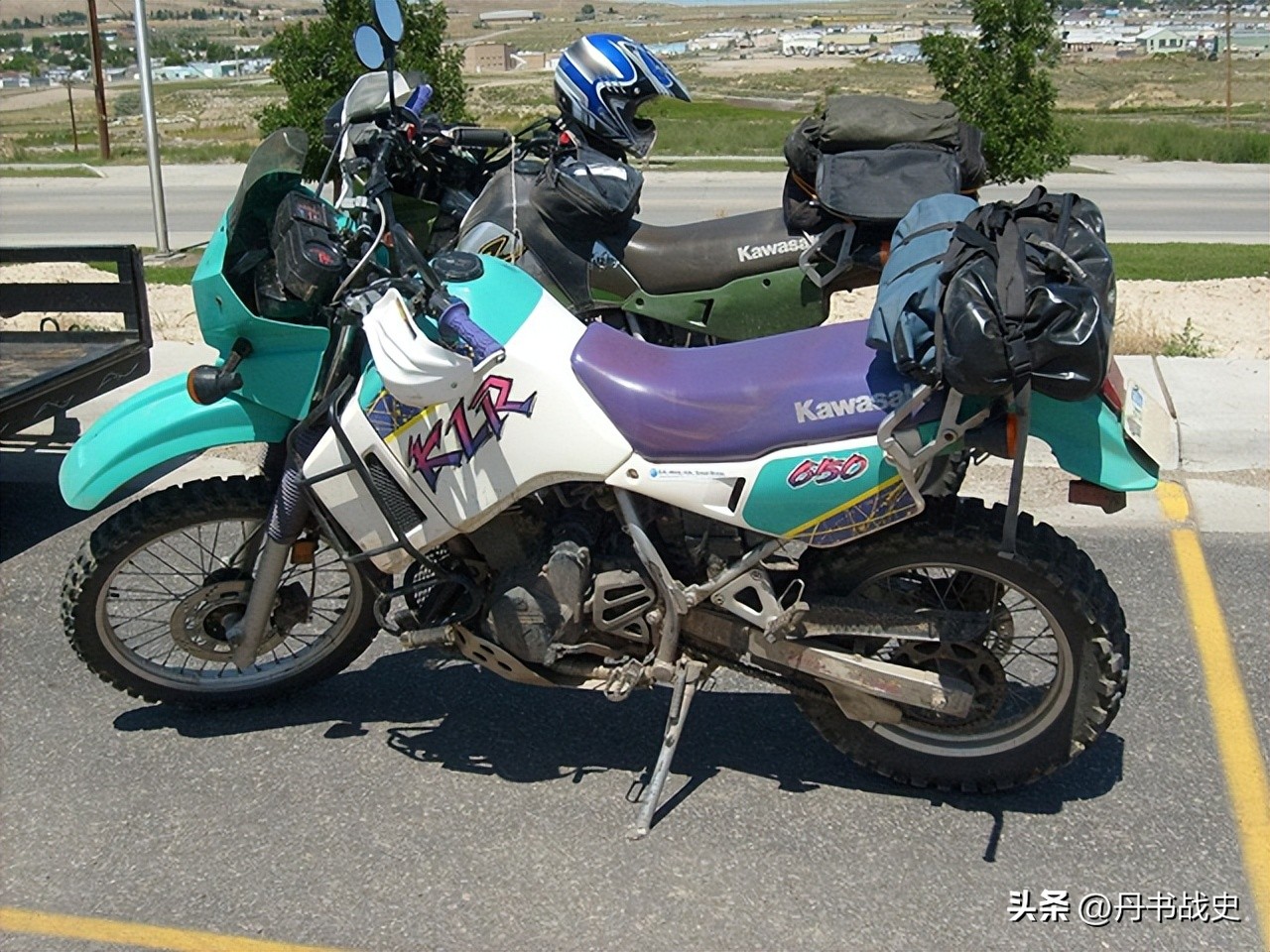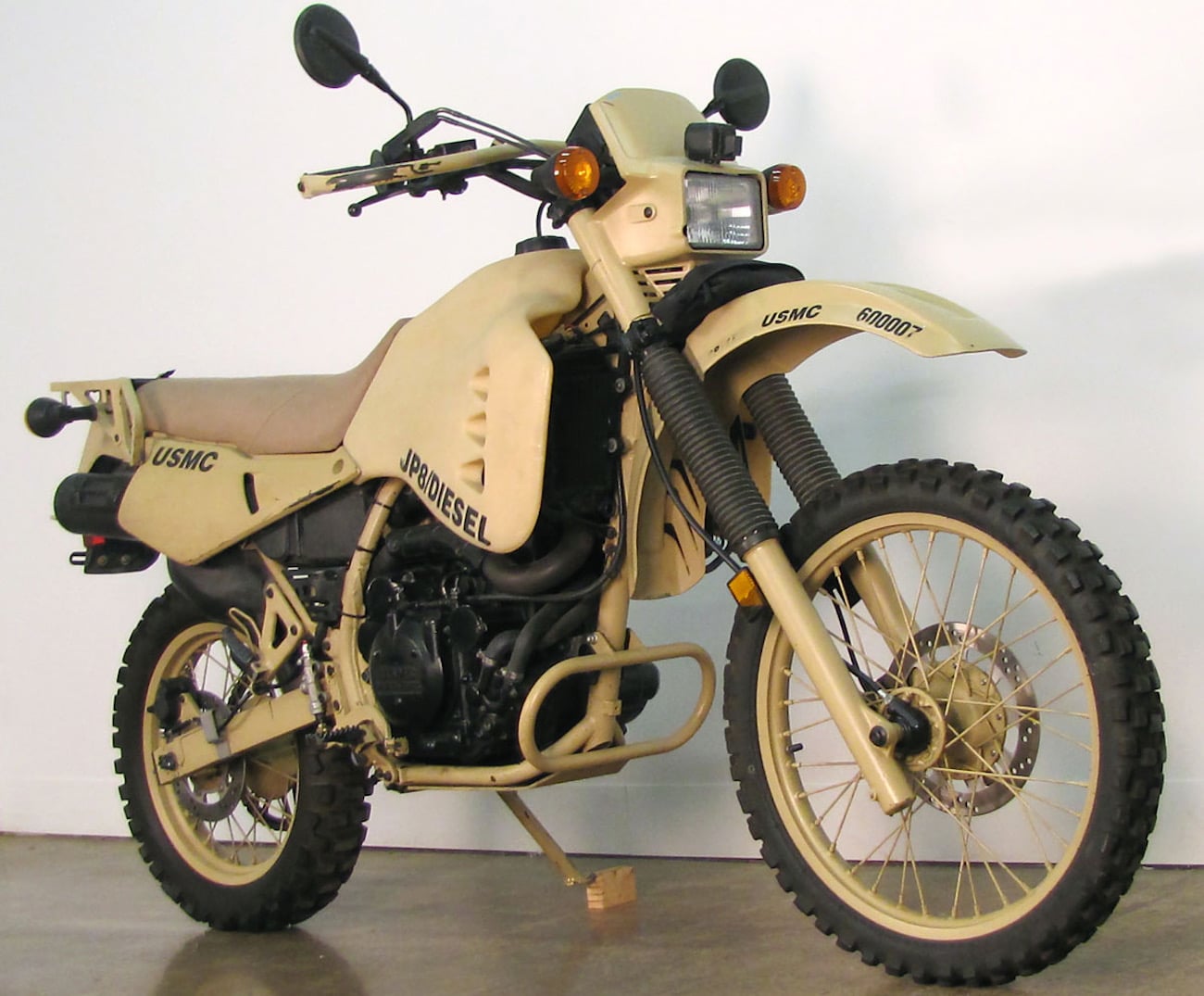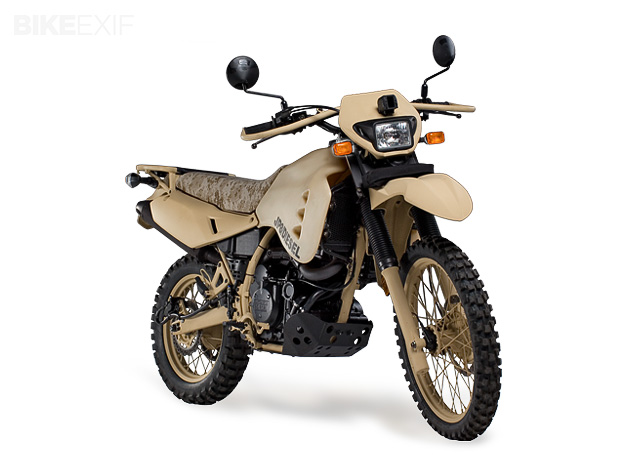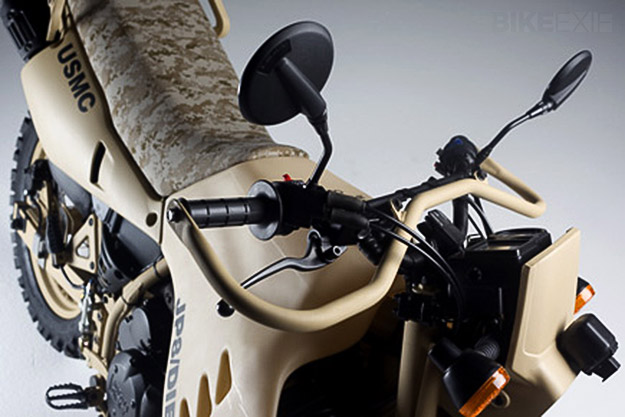Kawasaki M1030 Military Motorcycles

The roar of internal combustion, long the soundtrack of military operations, faced a silent revolution in the early 2000s. While high-octane gasoline fuels the majority of military vehicles, a small but significant experiment sought to redefine battlefield logistics and reconnaissance. The Kawasaki M1030, a diesel-powered motorcycle, offered a glimpse into a future where fuel efficiency and versatility could reshape military transport.
The Kawasaki M1030, a military motorcycle converted to run on diesel or JP8 fuel, was designed to improve fuel efficiency and logistical support. This article delves into the history, development, operational capabilities, and eventual phasing out of the M1030. It examines the vehicle's impact on military motorcycle design and its contribution to the exploration of alternative fuel technologies within the armed forces.
Development and Design
The M1030 traces its origins to a project initiated in the late 1990s by Hayes Diversified Technologies (HDT). The initial goal was to create a motorcycle capable of operating on the same fuel used by the majority of military vehicles and aircraft.
This would drastically simplify the supply chain, reducing the need to transport and store multiple fuel types in combat zones. The base motorcycle was the Kawasaki KLR650, a rugged and reliable platform well-suited for modification.
HDT replaced the KLR650's gasoline engine with a 584cc liquid-cooled, single-cylinder diesel engine. This new engine boasted improved fuel economy and the ability to run on a variety of fuels, including diesel, biodiesel, and JP8.
Operational Capabilities and Advantages
The primary advantage of the M1030 was its fuel efficiency. It could achieve significantly more miles per gallon compared to gasoline-powered motorcycles, reducing the logistical burden on military units.
This extended range allowed for longer patrols and reconnaissance missions without the need for frequent refueling. The ability to use JP8 fuel, the standard fuel for military aircraft and many vehicles, was another key benefit.
This simplified fuel logistics and reduced the risk of misfueling in combat situations. The M1030 also proved to be a durable and reliable platform, capable of handling rough terrain and demanding conditions.
Deployment and Usage
The US Marine Corps (USMC) was the primary user of the M1030. They deployed the motorcycle in a variety of roles, including reconnaissance, scouting, and military police duties.
The M1030 saw service in Iraq and Afghanistan, where its fuel efficiency and versatility proved valuable in the harsh desert environments. The motorcycle's ability to navigate narrow streets and off-road terrain made it well-suited for urban and rural operations.
The special operations community also adopted a variant of the M1030, further showcasing its adaptability. These specialized units used the motorcycle for covert operations and reconnaissance missions where stealth and range were critical.
The M1030M1: A Further Enhancement
An updated version, the M1030M1, featured further improvements. These refinements included enhanced suspension, improved braking systems, and a slightly more powerful engine.
These enhancements aimed to address some of the limitations of the original M1030, such as its relatively low top speed and handling characteristics. The M1030M1 represented the culmination of the diesel motorcycle development program.
It demonstrated the feasibility of using alternative fuels in military applications. However, it was not widely adopted due to evolving military priorities.
Phasing Out and Legacy
Despite its advantages, the M1030 was eventually phased out of service. A combination of factors contributed to this decision, including changing mission requirements and the emergence of other technologies.
The increasing emphasis on unmanned aerial vehicles (UAVs) for reconnaissance and surveillance reduced the need for manned motorcycle patrols. Additionally, the military began exploring alternative vehicle technologies, such as electric motorcycles and hybrid vehicles.
The M1030's legacy lies in its pioneering role in exploring alternative fuel technologies for military applications. It demonstrated the potential of diesel-powered motorcycles for improving fuel efficiency and logistical support in combat zones.
Looking Ahead
Although the M1030 is no longer in active service, its impact on military motorcycle design and alternative fuel research remains significant. The lessons learned from the M1030 program have informed the development of future military vehicles.
As the military continues to explore ways to reduce its reliance on fossil fuels and improve its logistical footprint, the M1030 serves as a reminder of the potential of innovative solutions.
The pursuit of fuel-efficient and versatile military vehicles remains a priority. The M1030's contribution to this ongoing effort secures its place in military history.
